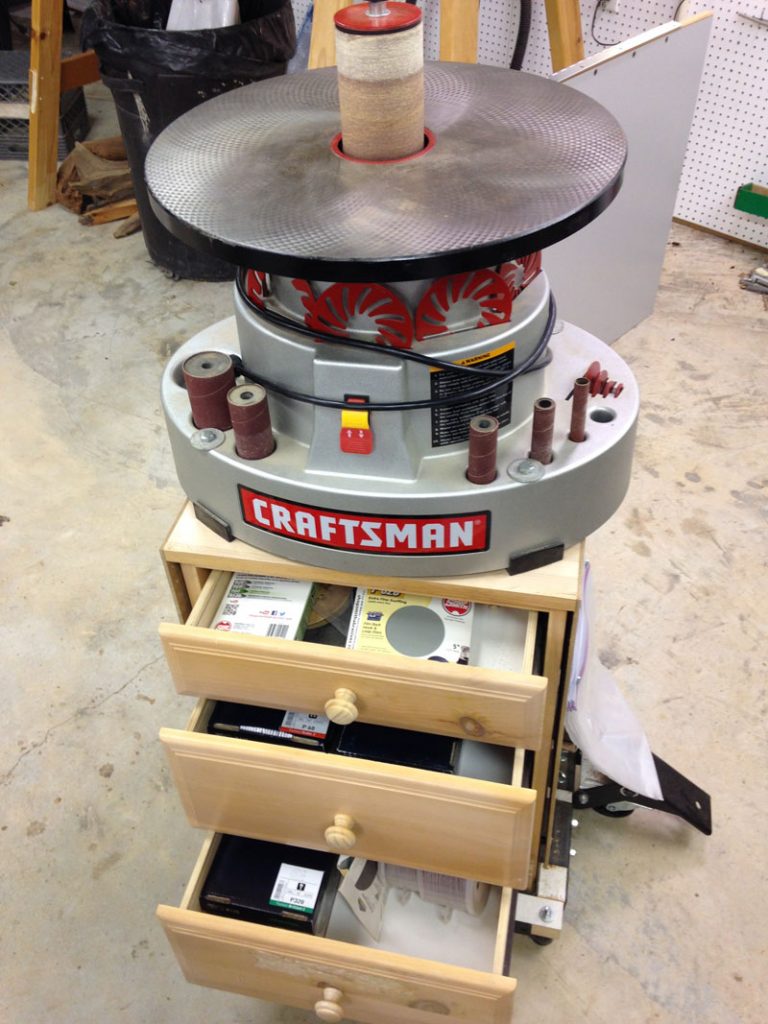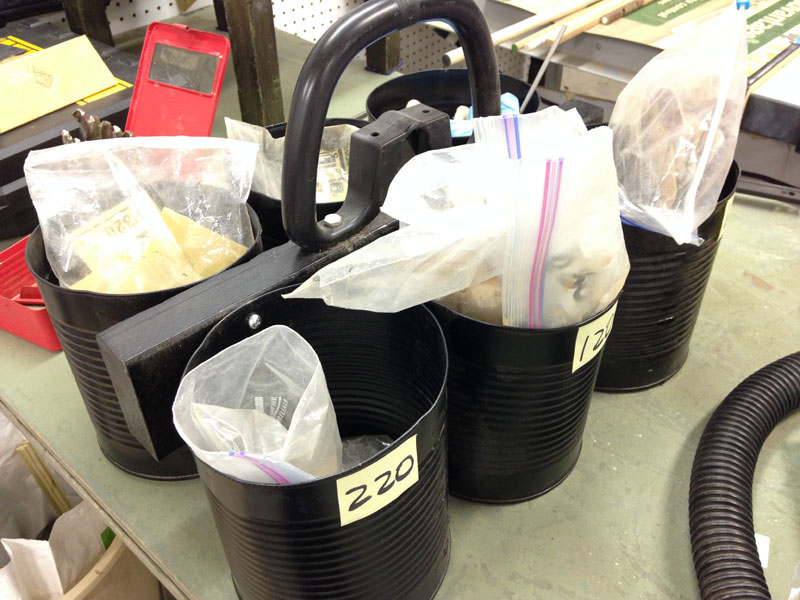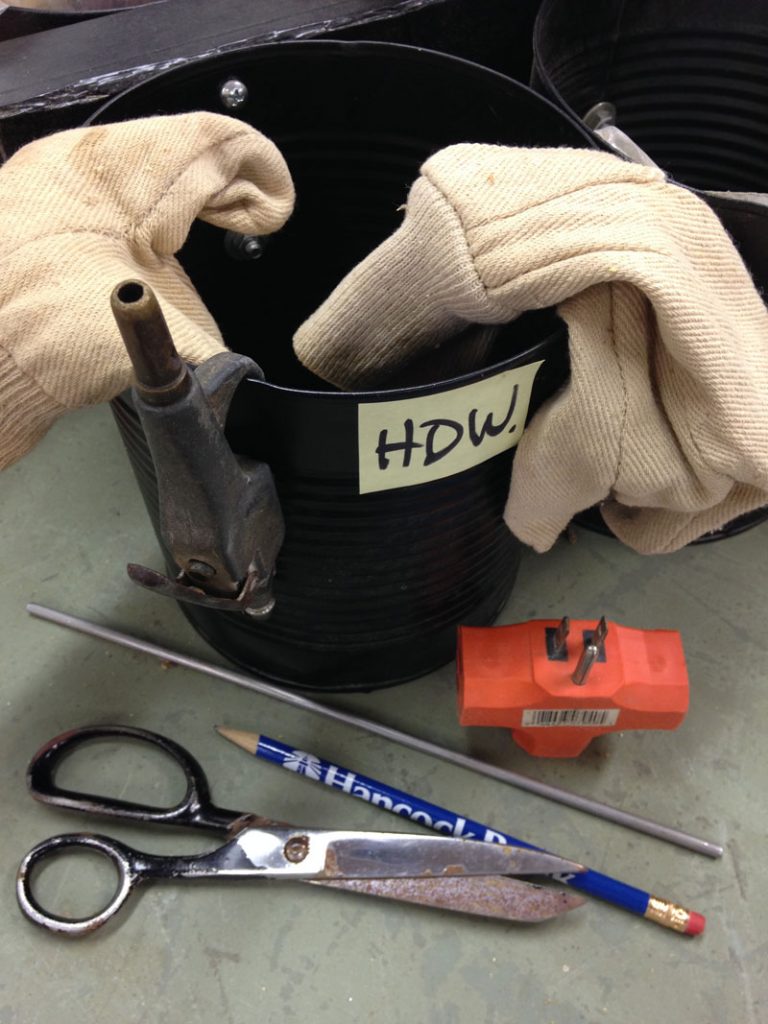Welcome to “Tips From Sticks-In-The-Mud Woodshop.” I am a hobbyist who loves woodworking and writing for those who also love the craft. I have found some ways to accomplish tasks in the workshop that might be helpful to you, and I enjoy hearing your own problem-solving ideas. Please share them in the COMMENTS section of each tip. If, in the process, I can also make you laugh, I have achieved 100% of my goals.
I suppose you could say I have two sanding centers. One holds the oscillating spindle sander and, because it has drawers, stores all of the disks for various Festool Sanders, too. It may be too fancy for some folks’ taste, being made from “real wood.”

This “sanding center” is on a universal wheeled base and can be rolled almost anyplace. The dust collection can connect to the cyclone or a shop vacuum, and the assortment of sanding disks can be close by wherever the sanding is taking place. If you’re constantly changing grits, that’s a really handy feature.
Mechanization is fine, as far as it goes. Sometimes, though, a job calls for hand sanding. Because we don’t want to be walking back and forth to our sandpaper supply, I made a sandpaper tote.
Our dear friends at the local Mexican restaurant saved some big steel cans for us. I spent about a million dollars (sorry, Steve) on Rust-OLeum rusty metal primer and Rust-OLeum flat black to coat the cans well before putting them to use. After all, they were going to be holding abrasives.
I attached the cans to a scrap piece of treated pine, and used the handle from an old Stihl string trimmer to complete the tote.

Fortunately, the old Stihl string trimmer handle was black, so the whole project was color-coordinated.
In the cans I put 1/3-sheet sanding blocks, scraps of sandpaper in Ziploc bags and a variety of other items that are used in sanding. Each can has a grit number assigned, with the appropriate Ziploc of scraps and a sanding block with that grit installed. The scraps all have their grit marked.

The cans are marked with Post-It Notes, just in case I want them to hold different grits in the future. One can holds a miscellany of sanding-related aids. For example, the rod can be slipped into the sanding block to lift the “lid” without ruining the ends of the paper. That way, they can go into the scrap Ziploc assigned to its grit, and not be wasted. Old scissors are handy for cutting sandpaper, or anything else that gets in your way. There’s an air blower for cleaning the paper when it clogs.
Jim Randolph is a veterinarian in Long Beach, Mississippi. His earlier careers as lawn mower, dairy farmer, automobile mechanic, microwave communications electronics instructor and journeyman carpenter all influence his approach to woodworking. His favorite projects are furniture built for his wife, Brenda, and for their children and grandchildren. His and Brenda’s home, nicknamed Sticks-In-The-Mud, is built on pilings (sticks) near the wetlands (mud) on a bayou off Jourdan River. His shop is in the lower level of their home.Questions and comments on woodworking may be written below in the comments section. Questions about pet care should be directed to his blog on pet care, www.MyPetsDoctor.com. We regret that, because of high volume, not all inquiries can be answered personally.


A million dollars for spray paint might not be far off these days… the prices for spray paint have gone through the roof!